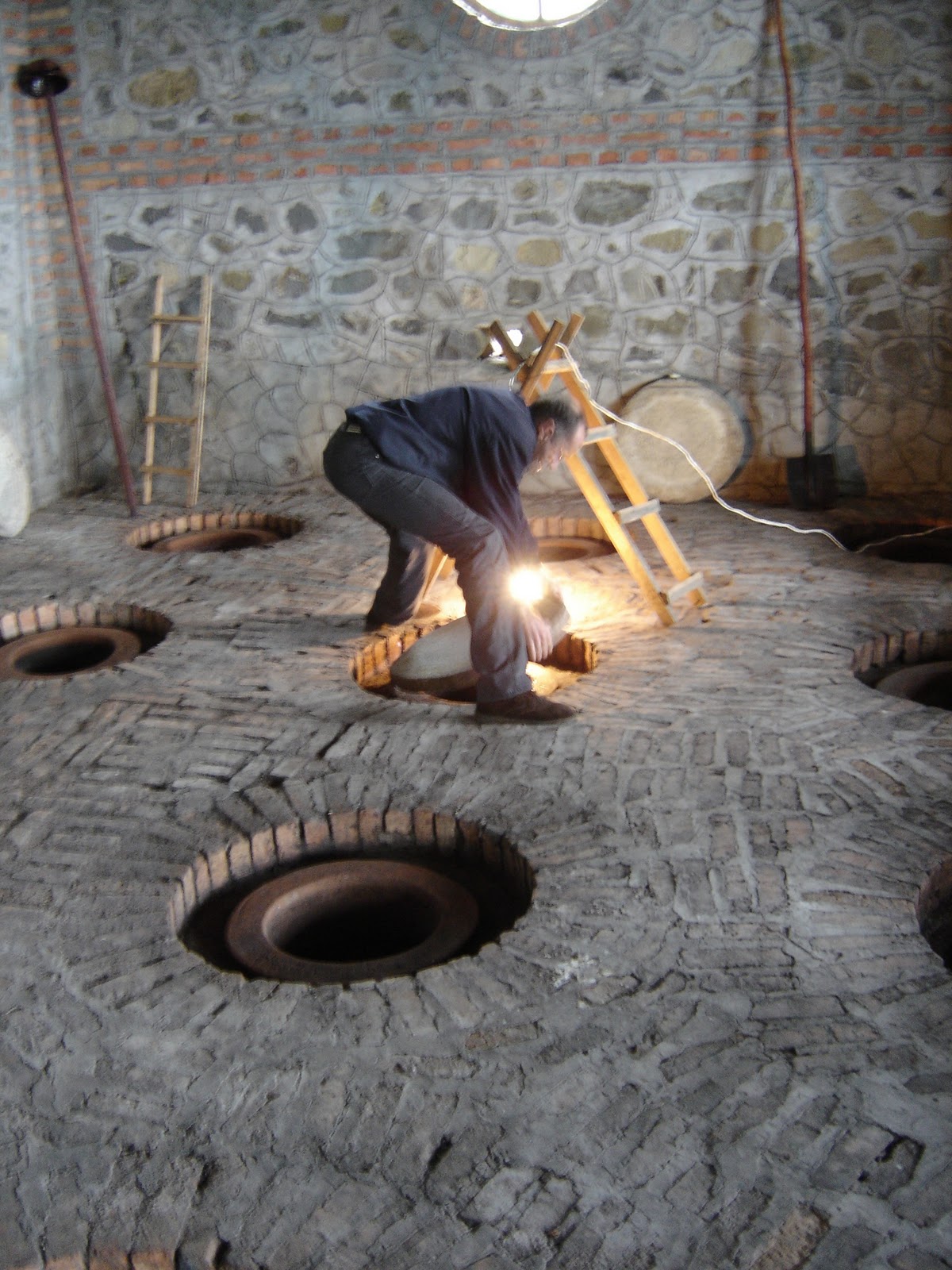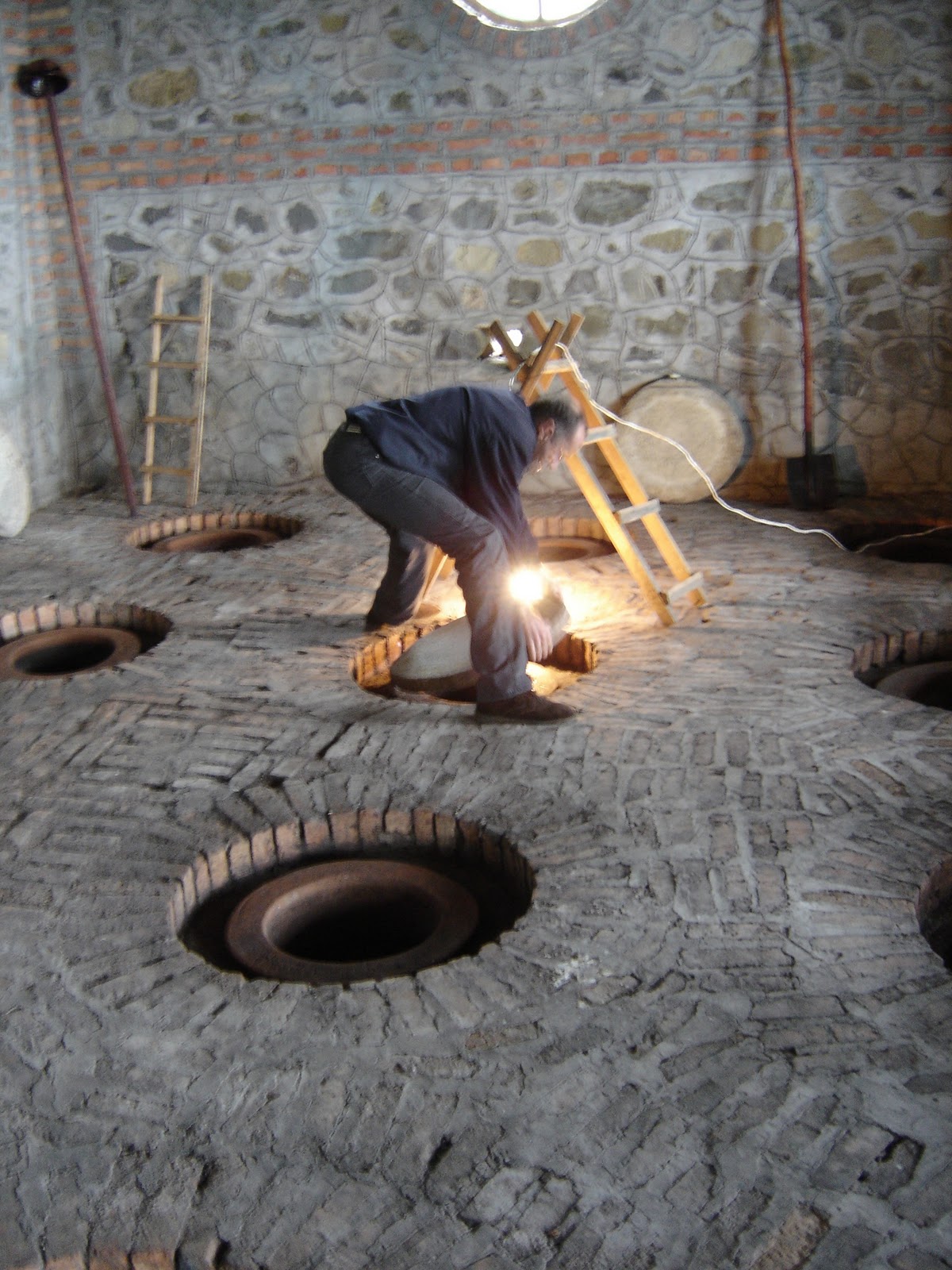Best natural picks
My best picks out of 150 natural wines tasted in Zurich.
Natural wine: what it is and why it matters. Summary of the 2011 Natural European Wines conference and tasting in Zurich.
 |
| Quality inspection in an amphorae room, Kakheti, Georgia. |
This wine is presenting all the characteristics of an amphora white in high intensity: the colour is a deep orange-amber, there is little direct fresh fruitiness on the nose but a lot of complexity and intensity: apple skins, dried apricots, quince and peach preserve, cinnamon, cloves, pepper, vanilla, and a lot of raisins. What is really interesting here is how this distinguishes itself from other amphora whites: instead of rustic phenolic oxidativeness it is showing very balanced and actually elegant, with a silky, even texture and satisfactory freshness (not easy to achieve in the style), clean, juicy and mildly mineral where many similar wines are rough, fruitless and alcoholic. This wine is not a curiosity but a fully valid bottle – surely made in an ‘alternative’ style but without sacrificing drinkability and a sense of linearity. I’m a big fan of Georgian wines, and I love to try an amphora white when I have the occasion. This might be one of the best wines I’ve had in both departments.
 |
| Grape harvest underway in Kakheti, Georgia (September 2005). |
This post also appears in Hungarian on A Művelt Alkoholista.
Two wines that caught my attention, though, are a white and a red made fully without the addition of sulphur. There is currently a (justified) fashion towards organic and biodynamic wines, but even biodynamics is not necessarily synonymous with no sulphur addition. Sulphur (usually in the form of sulphur dioxide; hence the Contains sulphites mention on wine bottles now obligatory in the EU) is considered a ‘traditional’ additive to wine, and has been used for centuries to protect from bacteria and oxidation. These two factors make no-sulphur-added wines (there is always a bit of sulphur naturally produced during fermentation) a challenge. With low SO2, your wine is prone to all sorts of bacteria including acetic bacteria that change wine into vinegar (with no SO2, this is handled by extreme hygiene in the cellar, and keeping wine at low temperatures throughout – not always easy for shops and consumers) and is likely to oxidise if exposed to air for too long (which is why you are usually advised to drink a no-sulphur wine in one session and avoid decanting, though there are some exceptions).
You will find a growing range of interesting low- or no-sulphur wines from Alsace, Beaujolais, the Loire, but very few from Italy, where the concept has been establishing itself more slowly. That’s the background of my interest in trying these wines. Both are from 2008 and are classified in the umbrella DOC Langhe.
The white Di Vin Natura 2008, a blend of Sauvignon Blanc with local Arneis, is forgettable: showing a good saline intensity of terroir in mouth, it just lacks fruit, and the nose is fairly chaotic, reminiscent of of home-made ‘wine’ with all sorts of yeasty, microbial aromas. The red Di Vin Natura 2008 (blended from Nebbiolo, Barbera, Cabernet and Melot), on the other hand, is really interesting. It too displays a rustic just-finished-fermentation nose (aroma is rarely a biodynamic wine’s strength) but on the palate there is a moment of blissful fruit intensity of the kind you almost never encounter in a ‘normal’ wine.
Sulphur puts a wine in order: it is like packing a porcelain vase for shipping. It stabilises, immobilises, and to an extent, standardises. But it does so by putting a layer of matt varnish over the fruit. We get a lot from sulphur – a vast majority of our wines would be undrinkable without – but need to give up something in exchange: this unadulterated, tangible, pulsating presence of fruit flesh. If you’re feeling nostalgic about this loss, no-sulphur wines are for you.